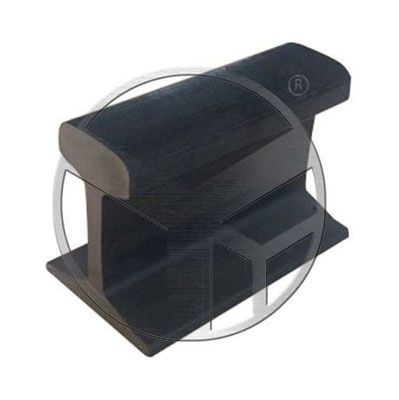Guide to Choosing Steel Rail
Steel rails are a vital component of the railway infrastructure, and their selection is crucial for the efficient and safe operation of trains. When choosing a steel rail, various factors should be considered, including the type of railway, rail weight, section shape, material composition, and manufacturing process. In this guide, we will discuss the key considerations when choosing steel rails.
Type of Railway:
The type of railway is a critical consideration when choosing steel rails. The two primary types of railways are heavy-haul and light-haul. Heavy-haul railways are designed to transport heavy freight loads and require stronger and more robust steel rails to support the weight. On the other hand, light-haul railways are designed for passenger and light freight transportation and require lighter and less robust steel rails.
Rail Weight:
Rail weight is another important factor to consider when choosing a steel rail. The weight of the rail determines its load-carrying capacity, and it is essential to select the appropriate weight for the specific railway application. Generally, heavy-haul railways require heavier steel rails than light-haul railways.
Section Shape:
The section shape of a steel rail refers to its cross-sectional shape. The most common section shapes are I-beam, bulb angle, and asymmetrical rail. The selection of the section shape depends on the specific application and the rail's load-carrying capacity. For example, an asymmetrical rail may be suitable for high-speed railways, while a bulb-angle rail may be appropriate for heavy-haul railways.
Material Composition:
The material composition of a steel rail is another essential consideration. The most common materials used in the manufacture of steel rails are carbon steel and alloy steel. Carbon steel is the most widely used material, and it is suitable for light-haul railways. However, for heavy-haul railways, alloy steel may be more appropriate due to its higher strength and durability.
Manufacturing Process:
The manufacturing process used in the production of steel rails can affect their quality and durability. The most common manufacturing processes used in the production of steel rails are hot rolling and heat treatment. Hot rolling is a process that involves heating the steel and then rolling it to the desired shape. Heat treatment is a process that involves heating the steel to a high temperature and then cooling it slowly to improve its strength and durability.
Maintenance:
The maintenance of steel rails is an essential consideration. The type of railway and the environment in which it operates can affect the rail's maintenance requirements. For example, railways in areas with high humidity and corrosive environments may require more maintenance than railways in dry and less corrosive environments.
Conclusion:
Choosing the right steel rail is crucial for the efficient and safe operation of railways. Factors to consider include the type of railway, rail weight, section shape, material composition, manufacturing process, and maintenance requirements. The appropriate selection of these factors can ensure that the steel rail is fit for purpose and can withstand the rigors of the railway environment.

评论
发表评论